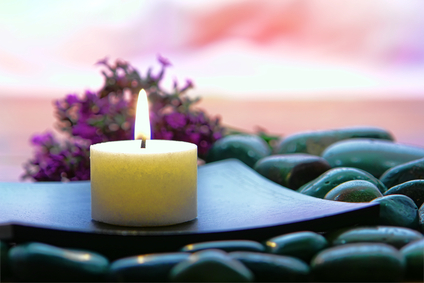Letting Go of the Past with Mindfulness Meditation, Part 2

Letting go of the past can be quite a challenge for many of us. Pleasant memories lure us back to happier times in our lives, and unpleasant memories can be filled with unresolved issues. There is nothing inherently wrong with remembering the past. Rather it’s our inability to let go of our attachment to it that keeps us from being happy in the present.
This doesn’t mean that we should forget the past. It only means that we need to stop clinging to it, if we want to find freedom from our suffering. We’ll still be able to enjoy pleasant memories. In fact, we’ll enjoy them even more when we overcome the desire to recreate them. We’ll also learn to accept unpleasant memories, because we’ll be able to accept them without expecting amends from people who have harmed us.
Through the practice of mindfulness meditation, you will learn how to find happiness in the present moment, which is where reality is. The past is already gone, and the future will always remain in the future. We will always be in the present.
In part 1 of this article series, we saw how the Five Hindrances (sensual desire, aversion, restlessness, sloth/torpor, and doubt) keep us attached to the past, and unable to let go. In part 2, we’ll learn how to use the mindfulness meditation practice to gain the strength and courage to let go of the past. This will enable us to find true peace and serenity in all areas of our lives.
Sitting Meditation
Many of us are led to believe that if we could only understand our past, then we could accept it. This is partly true—actually, a small part. It takes more. In order to accept our past, it takes courage, inner strength, and wisdom, and attaining these qualities takes effort and determination. The good news is that the practice of mindfulness meditation will enable you to make quick and steady progress. It is the shortest path to inner peace that I have found.
At the core of the mindfulness meditation practice is the development of our investigative skills—concentration and mindfulness. These will help us to see our past with deep insight and wisdom. We will also see how the Five Hindrances manifest themselves, and gain the strength to overcome them. The additional benefit is that the practice will give us the strength we need to overcome any of life’s challenges.
To develop these investigative skills, we must structure our meditation around them. Here are some basic guidelines for a typical meditation session:
Sitting Position – Sit in a comfortable chair without armrests; back straight, and feet flat on the floor. Keep your hands either cupped one inside the other just below the navel, or simply rest them on your thighs. The main purpose of our sitting position is to be comfortable and alert. Don’t lie down, as you’ll probably fall asleep.
Concentration – Use the counting technique to help you develop your concentration. During your meditation, count your breaths 1 through 5 silently in your mind. When you get to 5, simply start over again. Keep your attention focused on the air passing through the tip of your nose. When a distraction arises, simply ignore it and immediately bring your attention back to your breath. This will help keep your mind from wandering so easily.
Mindfulness – After a few minutes of concentration meditation, switch to mindfulness meditation. Continue observing your breath. However, this time instead of counting each one, simply observe the entire breathing process mindfully. This means that you are relaxed, and not forcing yourself to do anything. When distracting thoughts arise, gently bring your attention back to the breath.
In order to get the most from your meditation practice, we suggest meditating regularly—preferably daily. How long you meditate depends on your available time. But remember, how fast you progress in your spiritual development will always depend on the time and effort you dedicate to your meditation practice.
If you need help with your meditation practice, I recommend the book Mindfulness Meditation Made Simple. It gives you detailed instructions on the 12 Steps of the Mindfulness Meditation Practice, and includes exercises for helping you become proficient with the meditation techniques.
Here is also a guided meditation to help you get started. It is the Relaxation Meditation from our new CD, Quick Start to Mindfulness Meditation. It is approximately 10 minutes long. You can use it at the beginning of your meditation session (before the concentration meditation). It’ll help make concentration easier:
Writing Meditation
Another important component of the mindfulness meditation practice is writing meditation. This is a relatively new practice we’ve developed at the Mindfulness Meditation Institute, and is gaining worldwide acceptance among psychologists and practitioners. Author and clinical psychologist, Elisha Goldstein Ph.D., wrote about it in his article, Wiring the Brain for Better Relationships.
What the writing meditation does is effortlessly reprogram our brain to be more understanding, loving, compassionate, and forgiving. These qualities are crucial for healing the wounds from our past, and providing us with the interpersonal skills we need to form healthy relationships in the present.
Writing meditation is extremely easy, and takes only 10 minutes a day, but the benefits are tremendous. Within just a matter of days, you’ll find yourself being more loving, compassionate, and outgoing without any conscious effort.
Both the sitting and writing meditation will give you the strength, courage, and wisdom you need to find freedom from your past, and enable you to:
- Find true happiness in your present-day relationships.
- Gain the freedom to move on with your life.
- Find inner peace and serenity, even in difficult situations.
The best part about the practice is that you’ll see immediate results, and continue making steady progress.
If you enjoyed this article, sign up below for the Blooming Lotus Newsletter and we’ll notify you when the next article is released:





0 Comments